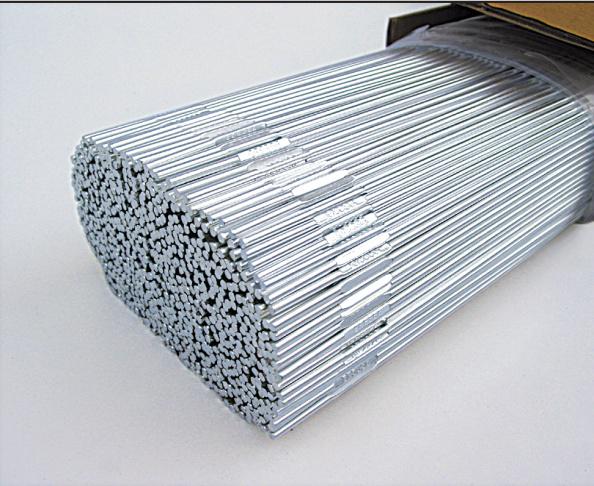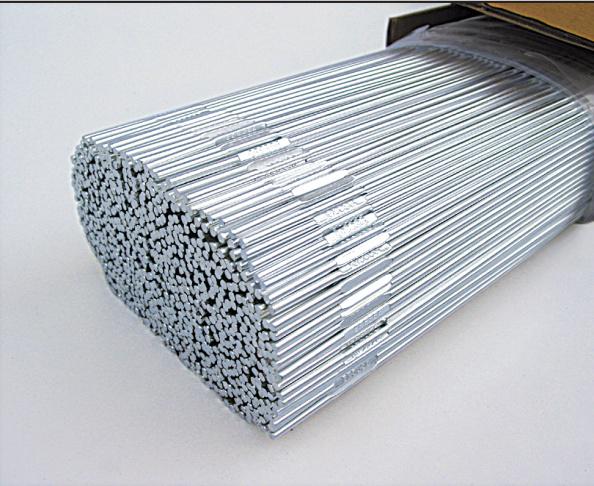Introduction of 5182 Aluminum Automatic TIG Welding rod for Tank Truck5182-H111 aluminum alloy has good mechanics, forming, corrosion resistance and weldability, and is an ideal material for the production of tank car bodies. In the application production, it is found that there are imperfect penetration and porosity defects in the back weld and the weld toe...
Introduction of 5182 Aluminum Automatic TIG Welding rod for Tank Truck
5182-H111 aluminum alloy has good mechanics, forming, corrosion resistance and weldability, and is an ideal material for the production of tank car bodies. In the application production, it is found that there are imperfect penetration and porosity defects in the back weld and the weld toe. These problems cannot be effectively solved by preheating, cleaning and changing welding parameters before welding. Now it is found that the double-sided welding process of self-fusion with wire filling on the front and no wire filling on the back effectively solves the problems of incomplete penetration and porosity in the back welding seam.
5182 Aluminum Automatic TIG Welding rod for Tank Truck
The welding material is 5 1 8 2 -H111 aluminum alloy rolled sheet, and the size of the test plate is 600mm×200mm×5.5mm. ESAB S Al 5356, φ 1.2mm welding wire is used as the filler material. Using a Saffron NERTAMATIC 450 automatic TIG machine and a tooling fixture with a U-groove backing plate. Before welding, clean the oxide film, oil stains, impurities and other foreign objects on the groove surface and within 25mm on both sides of the groove. When welding, the front side is filled with wire and the back side is not filled with self-fluxing welding.

(1) Using the single-sided welding process, when the heat input is small, there will be incomplete penetration defects on the back of the weld. When the heat input is large, the back weld is forcibly formed by the groove of the backing plate, and more porosity defects appear at the weld toe. During the welding process, the oxide film, moisture and oil on the surface of the material, ambient humidity, and moisture content of the shielding gas provide the source of hydrogen. The hydrogen does not have time to escape, forming pores.
After using the self-fusion welding process on the back side, the incomplete penetration of the back side and the porosity at the weld toe are completely eliminated, the weld seam is well formed, and the fish scale pattern is uniform and clear.
(2) Stretching of welded joints
According to the ISO4136 standard, the bending test is carried out according to the ISO5173 standard, and the test is carried out on the AG-X250kN electronic universal testing machine. The average tensile strength of the welded joints reaches 269MPa, and the tensile strength of the welded joints is greater than the minimum tensile strength of 255MPa specified in the standard under the annealed state of the base metal, which meets the requirements of the standard ISO 15614-2. Carry out 2 forward bending and 2 back bending tests, the diameter of the indenter is 40mm, and the bending angle is 180°. There is no single crack > 3mm in any direction on the bending surface of the bending test piece, and the bending test is all qualified.
3) Macroscopic and microscopic metallographic inspection of welds according to ISO 17639 standard. The macroscopic metallographic sample was corroded with 10% sodium hydroxide solution, and the microscopic metallographic test was corroded with Keeler reagent (15HF+1.5%HCl+2.5HNO3). It can be seen that the welding seam is well fused, and there are no defects such as cracks, pores and slag inclusions. There are no microscopic cracks in the weld seam and heat affected zone, and the metallographic inspection is qualified.






